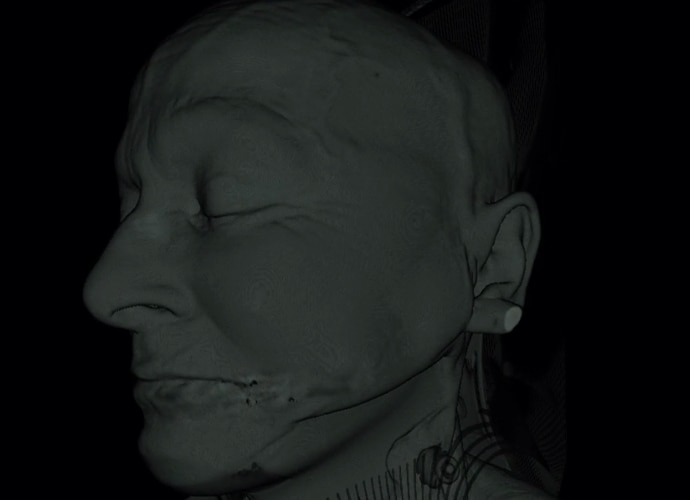Singular Health: A solid achievement in medical imaging
Ideal for review, collaboration, and patient education with the Spatial Reality Display.


- Helping surgeons understand complex anatomical structures in 3D to better plan challenging procedures
- Enabling radiologists, surgeons and medical doctors to collaborate more effectively
- Empowering patients to better understand their surgeries and comply with post-operative instructions

- Transform conventional 2D medical scans into solid 3D computer images that can be manipulated, viewed, and better understood¹
- Create a platform for securely storing and exchanging medical files and 3D images
- Leverage Sony’s Spatial Reality Display for glasses-free 3D viewing

- Achieves seamless, interactive, high-resolution 3D visualization
- Communicates spatial relationships in ways that no other display technology can
- Paves the way to the future 3D printing and CNC machining of customized implants and surgical guides
I’ve been using VR and stereo 3D from the very early days. This is by far the best experience I’ve had with stereo imaging.
Thomas Morrell
Chief Technology Officer, Singular Health Group
Helping medical practitioners prepare for surgery
It began with a severe case of ovarian cancer with the tumour wrapped in vital blood vessels. Planning this daunting surgery was made even more difficult by the need to combine the separate 2D scans into a mental map of the 3D anatomy. For help, the surgeon turned to state-of-the-art 3D medical imaging from Singular Health Group.
“He couldn’t visualize the blood vessels on a standard 2D display,” explains the company’s Chief Technology Officer, Thomas Morrell. “So he used our software to previsualize the issues in a 3D environment. He managed to get a much better understanding, going into surgery with far greater confidence.”
Says Morrell, “Once you’ve built the 3D model, you can get a really good view on a 2D screen. But without adding complicated shading, you don’t get the full sense of depth. That’s why we encouraged using VR goggles. I’ve been using VR for 12 years – from the very early days. While the goggles have made great strides, they can’t compare to the resolution and colour depth of the Spatial Reality Display. This is by far the best experience I’ve had with stereo 3D. Every other 3D viewer has always been a compromise. The Sony display is a zero-compromise solution.”
According to James Hill, Singular Health’s Chief Operating Officer, “There’s also a natural reluctance to putting on VR goggles. It’s a large jump for most surgeons or radiologists. Then the emergence of Covid-19 made people even more hesitant to put the goggles on. The Sony display allows the doctors to work in an environment they’re comfortable with. And our system provides a 3D model that can be viewed by your nurses, clinical team, tumour review board, medico-legal personnel and not least by the patients themselves.”

A new era in medical imaging
Based in Perth, Australia and listed on the ASX, Singular Health Group developed a proprietary Volumetric Rendering Platform to translate a stack of 2D scans into a single 3D computer model that can be rotated, zoomed, measured, annotated and manipulated in real time. Their system takes input from familiar CT, PET and MRI scanners, retains vital metadata from industry-standard DICOM® files and supports conventional PACS archiving and file sharing.
Doctors can view 3D files using the company’s FDA-cleared 3Dicom MD® software, rehearse virtual surgical procedures with Singular Health’s 3Dicom VR, and securely exchange 3D assets over data networks using the company’s proprietary medical record sharing system. Singular Health also intends to introduce 3D printing and Computer Numerically Controlled milling of fully customized implants and surgical guides.
While some other vendors can pre-render a static 3D file, Singular Health provides files that users can change and manipulate to get a deeper understanding of anatomical issues. In addition, Singular Health reduces up-front costs and alleviates the need for a dedicated on-site technician.
“We’ve seen tremendous interest, at first from oncologists, gynaecologists, dentists, liver surgeons, and cardiothoracic surgeons,” says James Hill. “And now other specialties are taking notice.”
Powerful 3D presentation
The Sony Spatial Reality Display enables viewers to see volumetric 3D without special glasses or VR goggles.¹ The display works from computer-generated images, in the case of Singular Health, using a Windows® PC running the Unity® rendering engine.² “We build our 3D models in a heavily modified version of Unity,” says Thomas Morrell. “So the integration with the Sony display was easy. It makes a lot of sense.”
Sony’s screen features a high-precision micro-optical lens to separate the left-eye and right-eye images. In addition, the display tracks eye movement down to the millisecond, pivoting the image in sync as the viewer tilts or moves the head up and down, left and right — even forward and back. The result is an overpowering sensation of a solid 3D object.
Need more information on the Spatial Reality Display? Speak to our team today
Footnotes
- See Spatial Reality Display instruction manual for details on product use, incl. 3D feature Computer required with a recommended CPU of Intel Core i7-9700K @3.60GHz or faster; and a graphics card such as NVIDIA GeForce RTX 2070 SUPER or faster.
- Recommend use of “high resolution, quality images” created using Unity or Unreal software